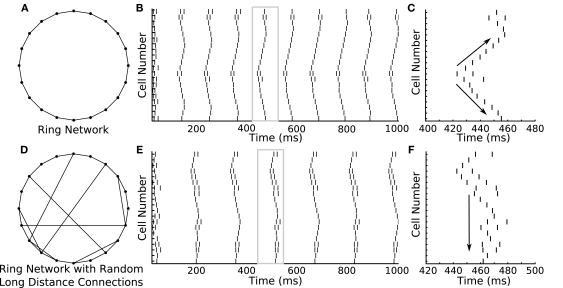Figure 5.
Ring network shows how different network connectivity can lead to different patterns of activity propagation. (A) A 20-cell ring network is constructed in GenNet with each neuron coupled via excitation to its two immediate neighbors. (B) Spontaneous activity propagates through this network along the edge of the ring. A single spike triggers a wave of spikes that travels around the ring in both directions. The window of time indicated by the gray box is magnified in the (C). (C) Magnified view of a single wave. Arrows indicate the bidirectional propagation of the activity wave from a single source. (D) A different activity pattern emerges when the connectivity is changed to include a few random connections along with connections to nearest neighbors. In this case, activity waves have the opportunity to short cut the path along the edge and can thus recruit the remaining cells in the network more quickly after the initial spiking event. (F) Magnified view [gray box in (E)] of a single activity wave shows how the propagating activity uses the long-distance connections to activate remote portions of the ring more rapidly. This causes the cells to be more simultaneously active as opposed to sequentially active.

